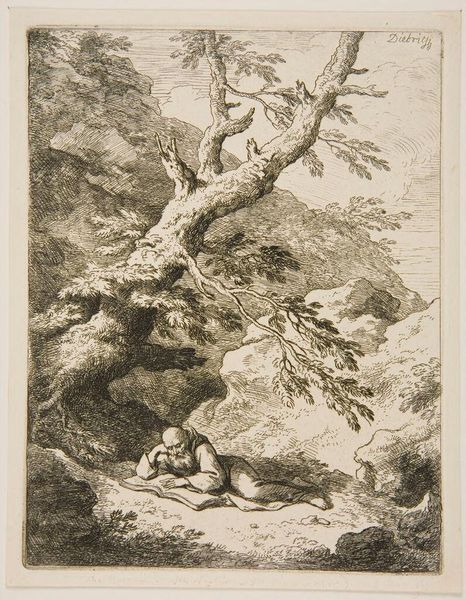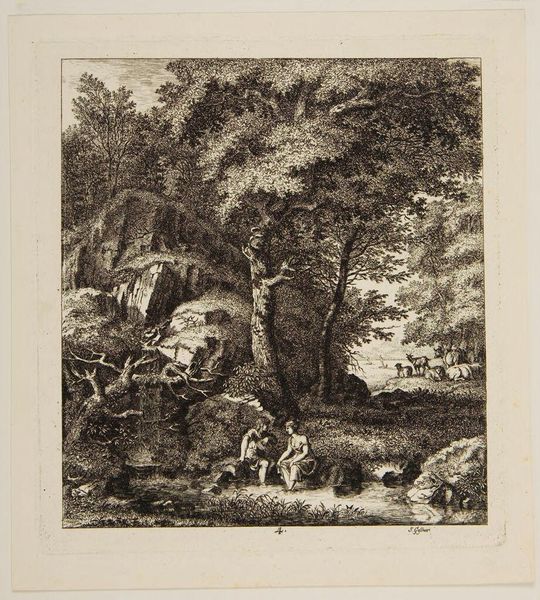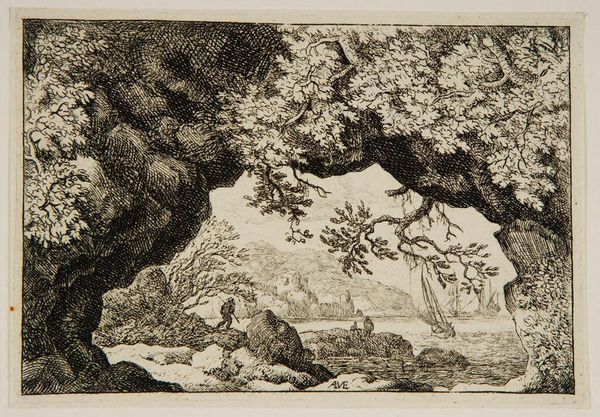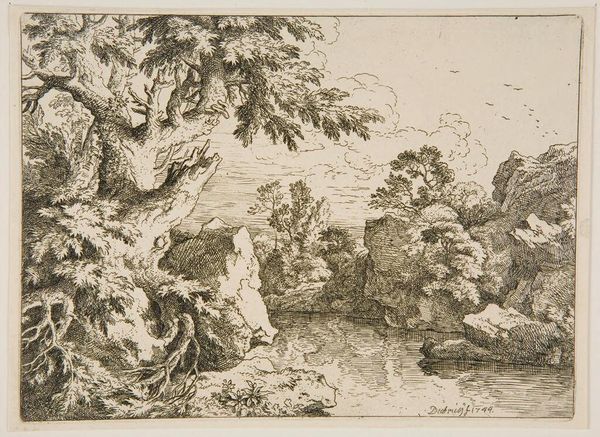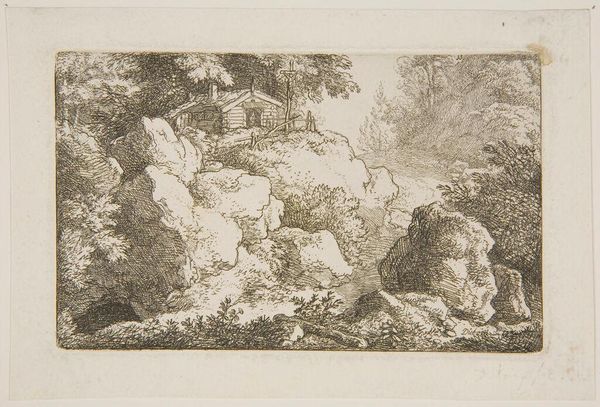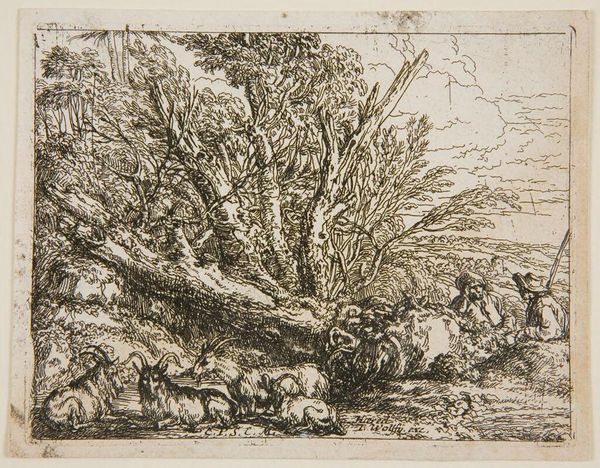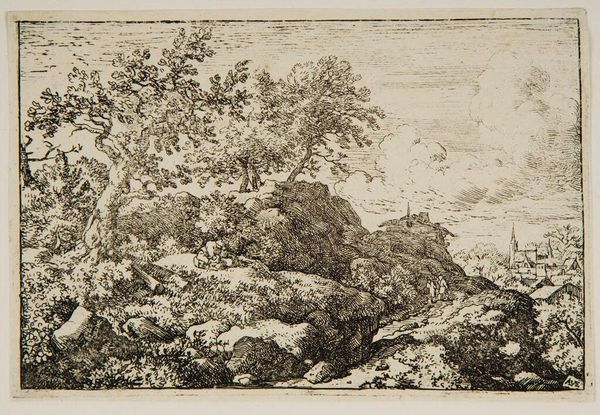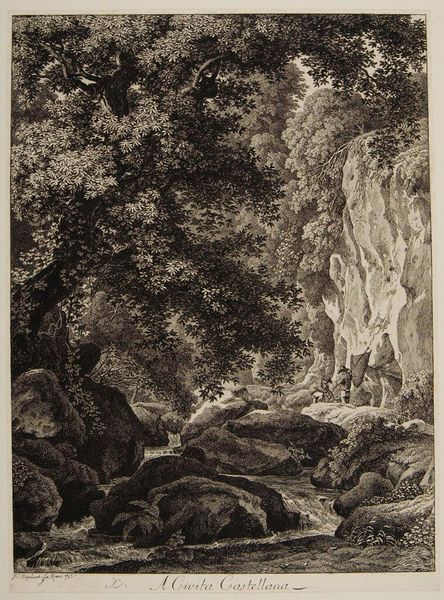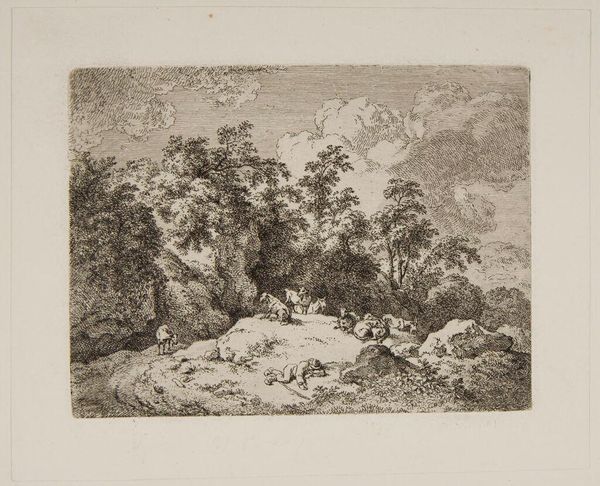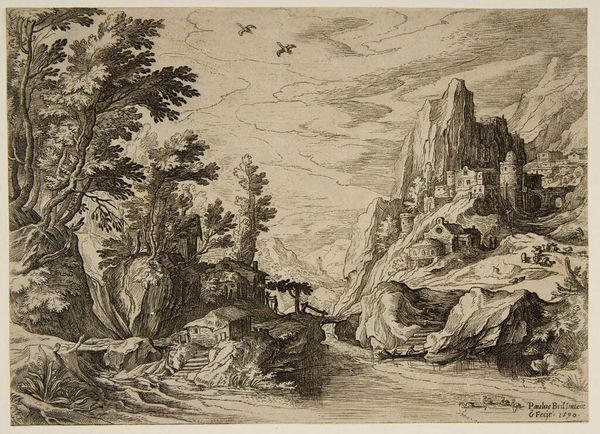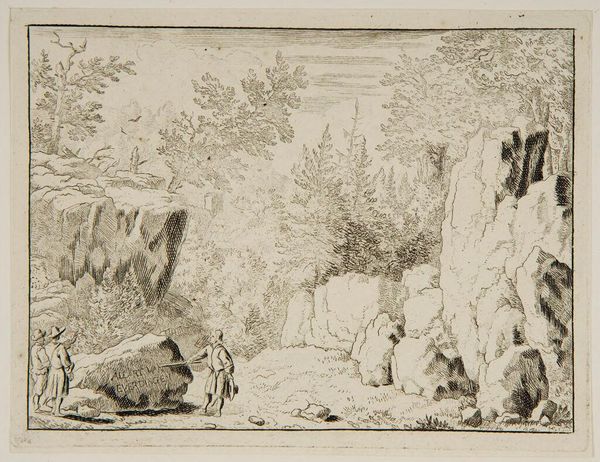
Copyright: CC0 1.0
Curator: This is "Mountain Torrent," an etching by Christian Wilhelm Ernst Dietrich, housed here at the Harvard Art Museums. The scene feels simultaneously tranquil and turbulent. What strikes you first? Editor: The sheer labor. Look at the crosshatching—the artist meticulously built form and shadow. You can feel the time embedded in the plate. Curator: Indeed. The etching technique gives it a sense of reproducible drama, a romanticized view of nature's untamed power accessible to a wider audience. Water, for centuries, has symbolized purification, constant change. Editor: Right, and Dietrich's choice of etching—an indirect process—speaks volumes. The acid bath literally eats away at the metal, a corrosive, transformative act mirroring the torrent itself. It's not just about representation. Curator: I see nature's persistent renewal, that the destructive force is essential for rebirth and new growth. The iconography of nature connects us to larger cycles of life. Editor: True, but it’s also about how such a scene was manufactured. This image was made to be circulated, consumed, and owned as a symbol of culture and taste. Curator: A valuable point, highlighting both its physical and symbolic currency. Editor: Exactly. It alters my understanding of this small but mighty print.
Comments
No comments
Be the first to comment and join the conversation on the ultimate creative platform.
